- Icebox Watermelon Growing Guide: How To Grow It In Your Garden - August 21, 2021
- Duke Blueberry Growing Guide: How To Start Your Blueberry Garden? - August 21, 2021
- Pink Hibiscus Growing Guide: How To Grow One Easily? - August 16, 2021
We might still be in the thick of summer, but have you already started to plan your fall garden? There’s nothing better than growing your own greens and root veggies and preparing a yummy salad straight from scratch. While you daydream about planting your rows, there will likely be some type of lettuce included.
At first thought, this one seems straightforward. There are only a few different lettuce types and varieties to choose from, right?
Not quite! Did you know there are actually more than 15 different kinds to consider? Today, we’re taking a closer look at each one and how they differ from one another. This autumn, it’s time to think beyond the iceberg and reap a beautiful, colorful bounty you can really sink your teeth into!
What Is Lettuce?
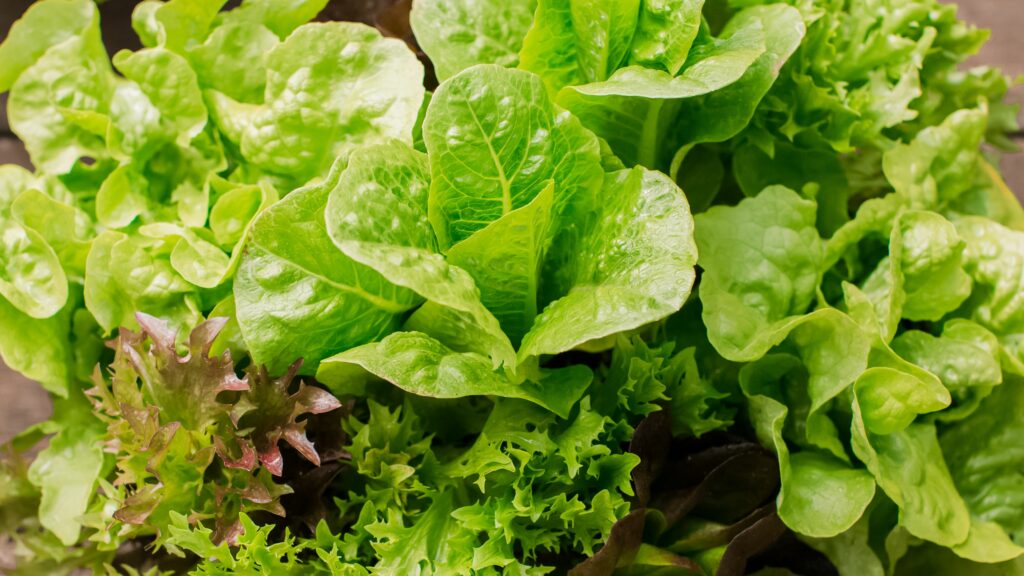
This might sound like a stretch, but did you know the lettuce plant is a member of the daisy family? This annual plant belongs to a group of plants called Asteraceae, which also includes chicory, chamomile, and calendula, among others.
In the West, lettuce is mostly grown for its crunchy, savory leaves. However, there are some dishes that make delicious use of its seeds and stem, too. To the relief of many novice gardeners, it’s a decidedly hardy plant that’s easy to cultivate. The only caveat? The temperatures have to be low enough for the climate to be cool. Otherwise, the plant can flower too quickly.
There are also several different pests and insects that tend to bore into lettuce plants, and the crop has been known to fall prey to fungal or bacterial diseases if growing conditions aren’t optimal. If you’re planning to save your lettuce seeds for next year’s garden, this blight might be disheartening. However, biologists have used these characteristics to learn more about the species and even cultivate new varieties.
The Main Differences Between the Different Lettuce Types and Varieties
The main differences between the different lettuce types and varieties are:
- Some varieties are grown as heads or bulbs while others are grown as loose-leaf plants
- Some varieties are pale to dark green while others can be red, purple, or even speckled
- Some varieties have sturdy, crisp leaves while others are more soft and supple
- Some varieties are mild and sweet in flavor while others can be bitter or peppery
Unveiling The Rich History of Lettuce
We can trace the history of lettuce all the way back to the ancient Egyptians, who are credited with transforming the plant into the food crop that it is today. Before their influence, lettuce was primarily regarded for its seeds, which could be used to create a fragrant cooking oil.
Later, the crop spread to the Greek and Roman populations, who gave the plant the name lactuca. Later, the English would change the name to lettuce. When did the plant become a household name?
The movement first took root in the 16th and 17th centuries, with references to lettuce found throughout medieval writings. During this era, mentions of lettuce were also included in early plant-themed books called herbals. Over time, different varieties were cultivated and developed, especially in Europe. Today, many of those cultivars can still be found in modern gardens.
How Do You Distinguish Different Types of Lettuce?
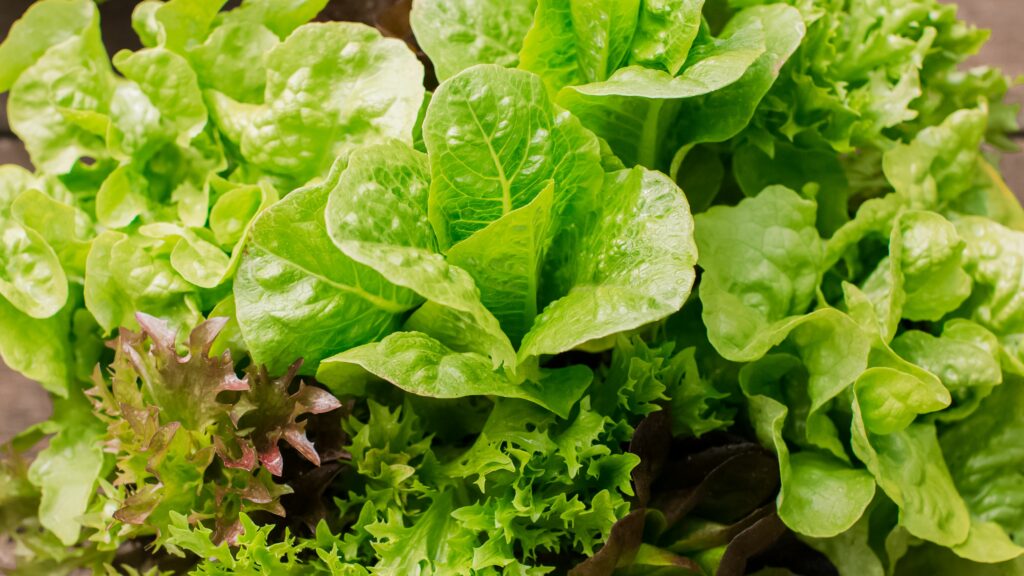
Browsing the local farmer’s market and not exactly sure what you’re looking at? Thankfully, it’s relatively easy to distinguish one type of lettuce from another. However, you may need to visit your local health food store to find the full breadth of varieties that we’ll share today.
The main characteristics to look for are color, size, and leaf shape. Of course, each variety has its own distinct flavor, too, but you can’t exactly chow down in the middle of the aisle! Whether you want to step up your sandwich game or put a new spin on a familiar favorite salad, it’s worth trying different greens.
Different Types of Lettuce to Try
Ready to make a little room in your shelf and in your belly? If you’ve grown tired of your usual staples, it’s time to learn all about the different lettuce types and varieties. Here are 10 of our favorite ones.
Bibb Lettuce
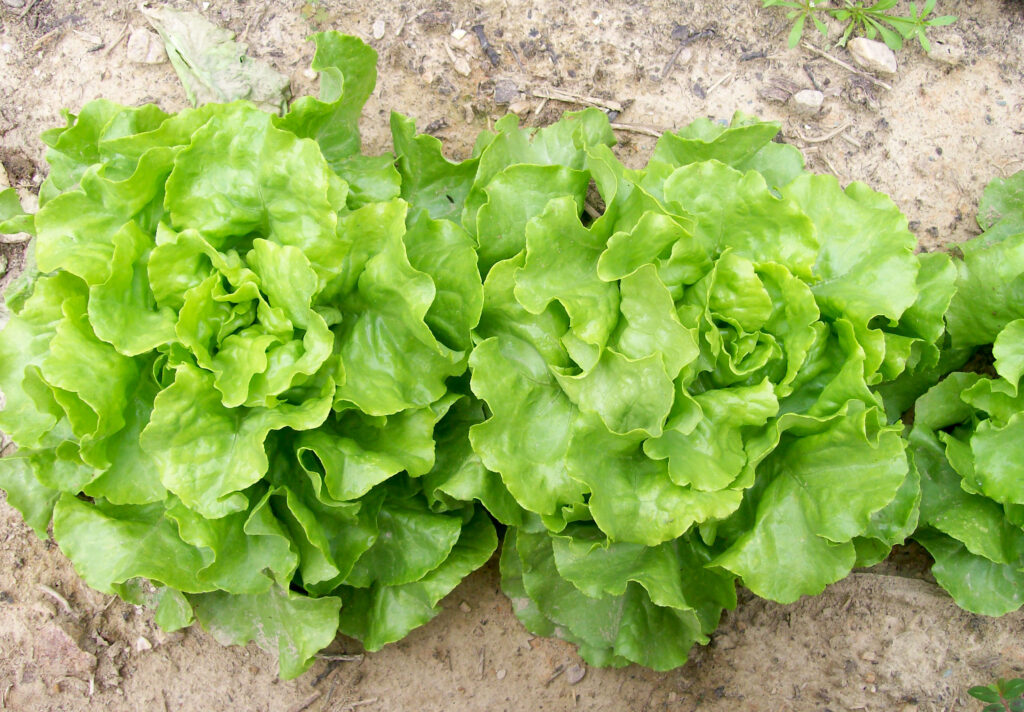
Bibb is one of two different types of butter lettuces. This is one variety that truly illustrates the mantra that good things come in small packages! Heads of Bibb lettuce are about the size of an average fist, and they’re cultivated as small, compact rosettes.
Slightly sweet and supple in texture, Bibb lettuce is highly popular in executive chef circles and is commonly found in high-end restaurant dishes. While it may be a little more expensive than some of the others on this list, a little goes a long way and will leave you wanting more. Its leaves are pale to medium green.
Arugula
While Bibb lettuce is compact and sweet, arugula could be considered its opposite in many ways. This type of lettuce is served in loose, dark green leaves and has a distinct peppery flavor that you can’t miss. Also called Italian cress, it’s a beautiful and elegant garnish on many lunch and dinner dishes.
Arugula also works well as a fresh pizza topping and is a great swap for the iceberg when you want a quick salad. Reach for it because it’s high in vitamin K and can help boost your bone metabolism. Keep it around because it’s light, tasty, and surprisingly addictive.
Batavia Lettuce
Are you getting tired of wilted salads that seem to lose their crunch in five seconds flat? If so, it’s time to add a little Batavia lettuce into the mix! You may have heard of this variety called summer crisp or French crisp. It has sturdy, thick leaves with delicate, curly edges and features a distinct green and red tint.
Looking for a quick meal that won’t require you to turn on your hot oven in the middle of a sweltering summer? Try a salad made with Batavia lettuce. Delightfully crunchy with just the right level of bitterness, it can help keep your meals fresh for much longer. This particular variety was made for hot weather and maintains its taste and texture, even when temperatures and humidity levels soar.
Boston Lettuce
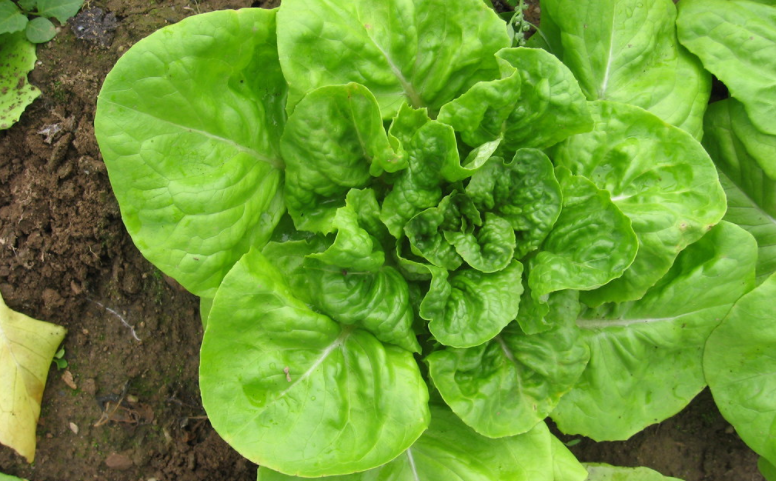
Wondering what the second type of butter lettuce might be? It’s Boston lettuce, and it’s time to get familiar with this scrumptious variety. If you’re looking for leaves that are practically begging to be filled with tuna or egg salad, these are it. They’re pliable and flexible while holding their shape and structure remarkably well.
Boston lettuce is cultivated in medium-sized heads, with soft, light green leaves cupped around a crunchy center heart. It has a nutty, mild taste that’s also a little sweet.
Keep in mind, however, that it’s best to eat Boston lettuce as soon as you get it. There’s a sweet spot when they’re ideal for making those coveted chicken wraps! After a few days, the leaves can begin to wilt and bruise, leaving them less soft and more squishy.
Endive
Want to make a great impression at your next dinner party? Serve a few wedges of endive lettuce, alongside individual bowls of ranch or bleu cheese dressing. Or, remove a few of the inner leaves and fill them to the brim with your favorite dinner meat. They’re especially tasty with ground chicken!
This isn’t a type of lettuce to mix in with other veggies in a plentiful summer salad. Rather, it’s meant to be the star all on its own, so let it shine. The pale yellow leaves are long and oval, making them the perfect vessels for your tried-and-true dipping sauce.
Dandelion Greens
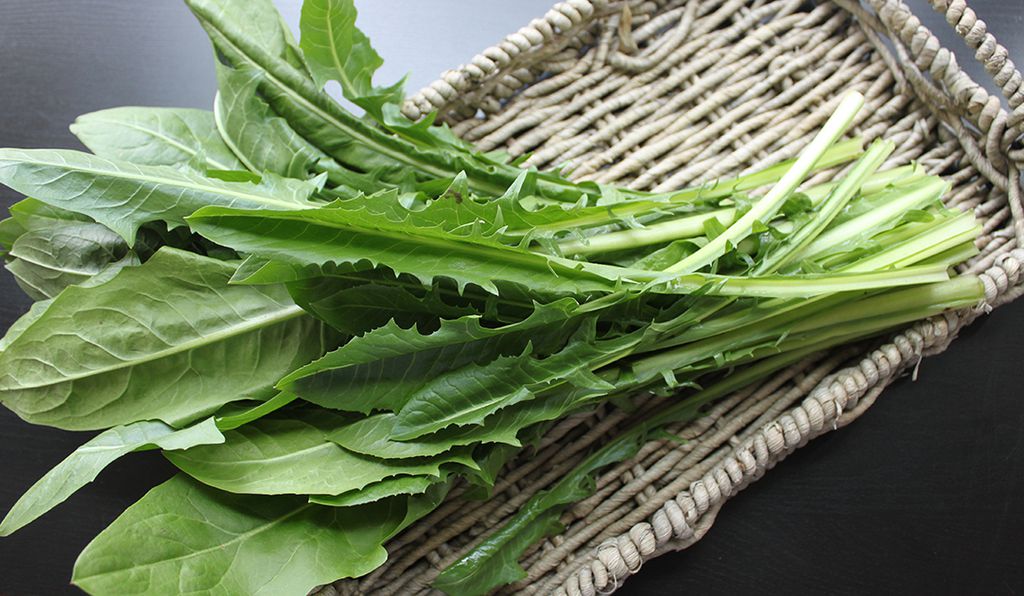
We’ll be honest. The pungent, bitter flavor of dandelion greens isn’t everyone’s cup of tea. Speaking of which, you can actually boil these leaves into a warm, soothing tea that can soothe your digestive tract, reduce water weight, and promote liver health, among other benefits.
On their own, dandelion greens also make a fun and unique salad, and go well with spicier, vinegar-based dressings. They can be green or slightly tinged with red.
Coral Lettuce
This variety is more than just a pretty name. Typically served loose-leaf, coral lettuce can vary in color from bright green to deep purple. Some types are even speckled! These leaves are sturdy and crisp, with tightly curled edges that deliver a smooth, mild flavor that’s a little bitter. The curls are excellent sauce trappers, making this a go-to salad green.
Cress
Also called watercress, this type of lettuce has a peppery taste akin to arugula. It also resembles kale in the sense that it’s sold in bunches, with a fibrous stem and tiny green leaves. Though the bold taste of cress can be excellent in soups and salads, be sure to wash the leaves carefully. This plant grows well in sandy ground and could carry traces of debris.
Iceberg
Of course, we had to mention one of the most popular varieties of lettuce: solid, reliable iceberg. Chances are, you have a half-eaten head of this plant in your crisper right now, and for good reason. Iceberg is a salad staple and also pairs well with almost any sandwich filling. It’s also great shredded and added to tacos!
It’s sold in a cabbage-like bulb, with pale green leaves. Due to its pleasantly mild taste, it’s usually eaten raw.
Romaine
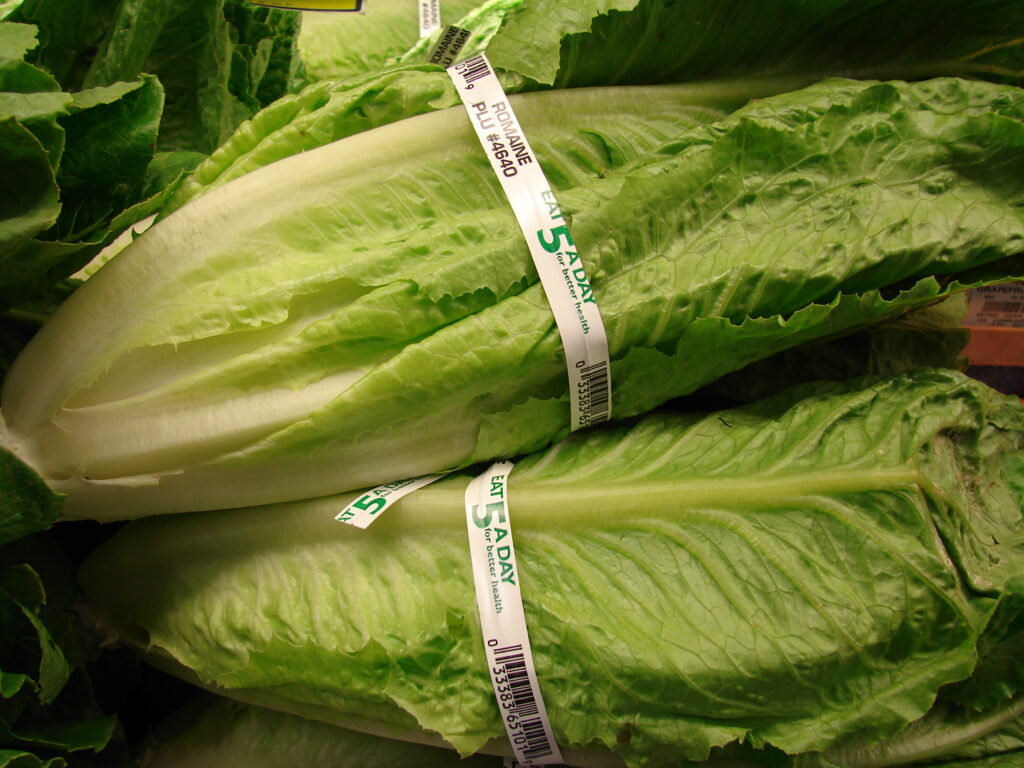
A hearty green, romaine lettuce has been a household staple for decades.
Its sold in tall heads that showcase dark, sturdy greens that are ideal for a Ceasar salad. Also called kos lettuce, it has a firm white rib that goes all the way down the center. While you can purchase just the heart, the real flavor and nutrition lie in the medium-t0-dark green leaves.
Mild and slightly bitter with a crisp texture, Romaine rivals the iceberg as America’s favorite salad green.
Comparison Table
If you want to cut right to the characteristics that distinguish these main types of lettuce, check out this comparison table for the facts you need.
| Bibb | Arugula | Batavia | Boston | Endive | Dandelion | Coral | Cress | Iceberg | Romaine | |
| Color | Medium green | Dark green | Green and red | Light green | Pale yellow | Green or red | Green or purple | Bright green | Light green | Medium to dark green |
| Leaf Shape | Soft, cupped | Long, serrated | Curly, crinkled | Soft, cupped | Long, oval | Long, serrated | Small, curly | Small, round | Long, cupped | Tall, sturdy |
| Taste | Buttery | Peppery | Pleasantly bitter | Nutty, sweet | Mild, bitter | Pungent | Mild, bitter | Peppery | Mild | Mild, bitter |
FAQs
Answer: Iceberg is the most popular type of lettuce. Also called crisphead lettuce, it’s sold widely in grocery stores all around the country. While its shape resembles cabbage, it’s a different species altogether. Add some to your favorite dish tonight!
Answer: When we think about lettuce, we usually picture a crunchy veggie that adds mild, earthy flavor to a dish. However, did you know that some varieties can be quite sweet?
The award for the sweetest lettuce goes to the Bibb variety! Also called butterhead lettuce, it has a wonderfully sweet flavor and a soft, tender texture. For this reason, it makes a great wrap and the flavor won’t overwhelm any filling you add inside.
Answer: This one’s really a matter of personal preference, although there are some lettuce varieties that are better suited for salads than others. For instance, endive leaves are just too long and beautifully shaped to chop up! The key to a great salad is texture.
You want to make sure the leaves are hardy enough to absorb your dressing and mix with other toppings without wilting. For this reason, iceberg is a go-to choice, as its crisp and crunchy leaves hold up well. Chop it and mix it, or simply serve a big wedge of it, and you’ve got a beloved comfort food that works for lunch or dinner.
Answer: Most lettuce varieties are cool-weather crops and grow best in the spring and fall. While loose-leaf lettuces (such as arugula) can grow in partially shaded conditions, heading types prefer plenty of light. Keep in mind that if you’re growing lettuce in the spring, it is best to give it a little shade to shield it from the warmer temperatures to come. If you’re planting in the fall, most plants need at least six to eight hours of direct sunlight per day.
Add one to two inches of compost or aged manure to the plot, and plant your seeds! You can also grow lettuce in containers or window boxes, thanks to its shallow root system.
Answer: If you’re new to growing lettuce, it’s best to stick with loose-leaf varieties that do not form a head. In most cases, it should mature in 40 to 45 days, but you can enjoy it much sooner if you’re eager. Keep a close eye on your garden and start thinning the plants out in about three weeks. Then, you can start munching on the trimmings!
Enjoy Your Favorite Lettuce Variety Today
Whether you prefer the buttery taste of Bibb lettuce, the peppery zing of arugula, or the crisp, watery flavor of iceberg, there are many different lettuce types and varieties to enjoy
Create a salad, make a wrap, or surprise dinner guests with an unexpected pizza topping. Either way, this is one crop you can grow and enjoy almost all year round. As we near the inevitable end of summer, now is a great time to start planning your fall garden, and lettuce is the perfect crop to plant!
Looking for more insight on how to perfect your gardening skills and grow your green thumb? Check out the rest of our helpful guides!

